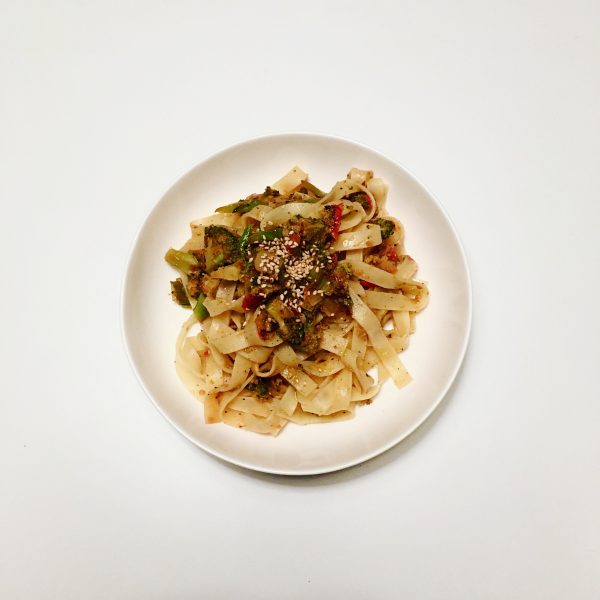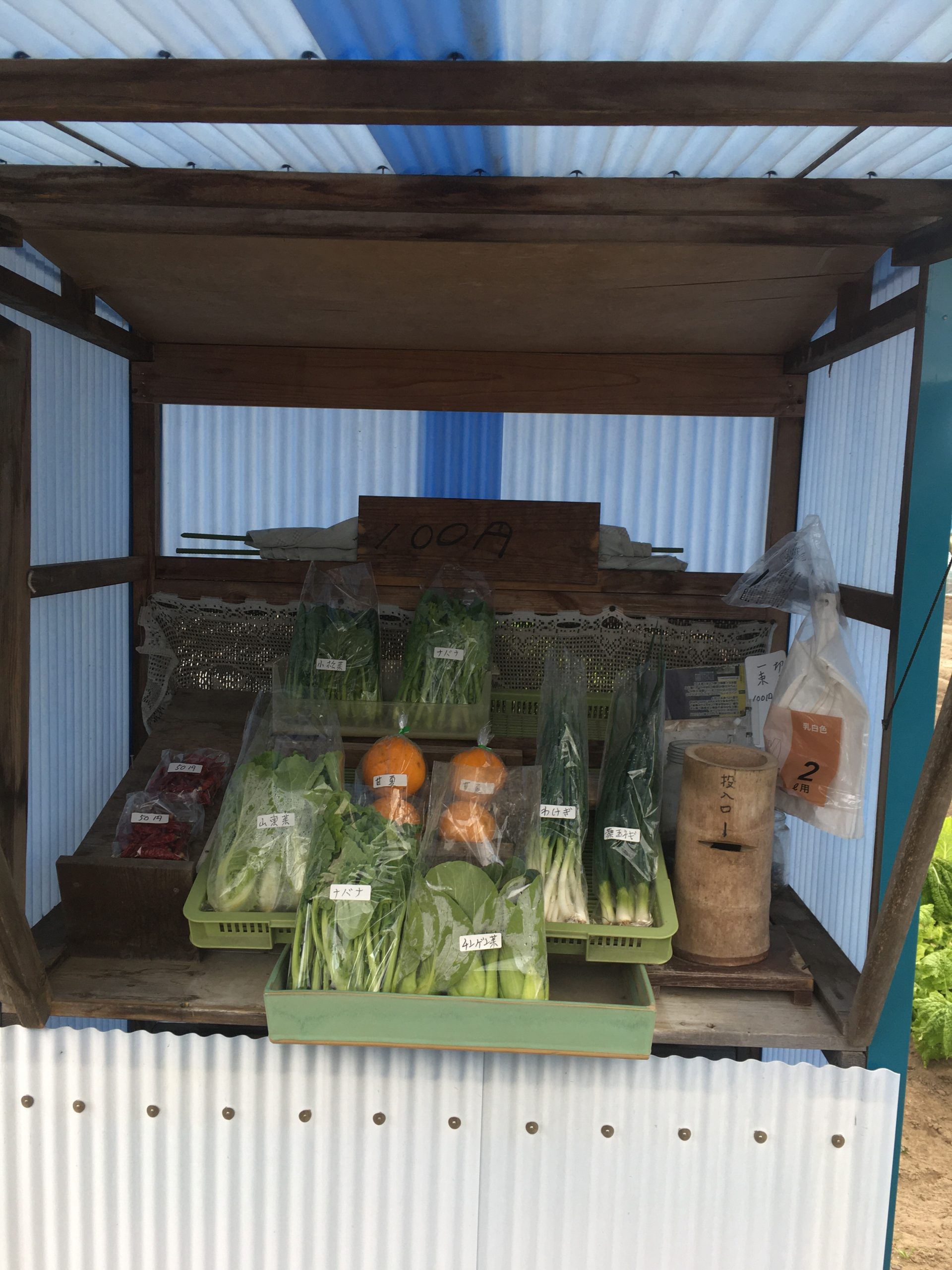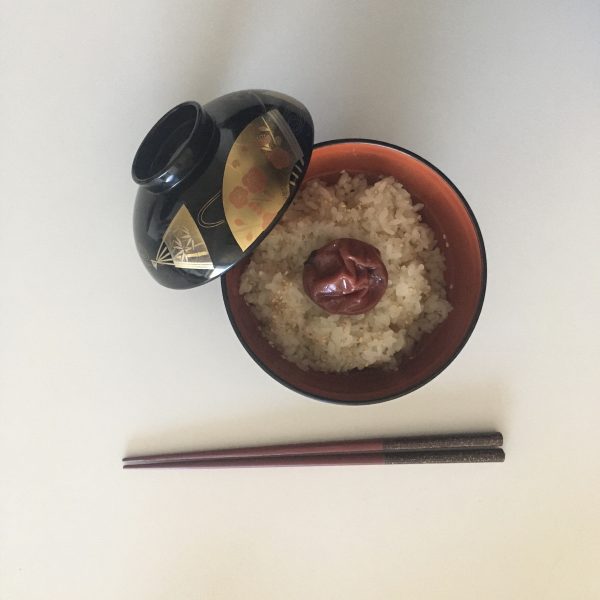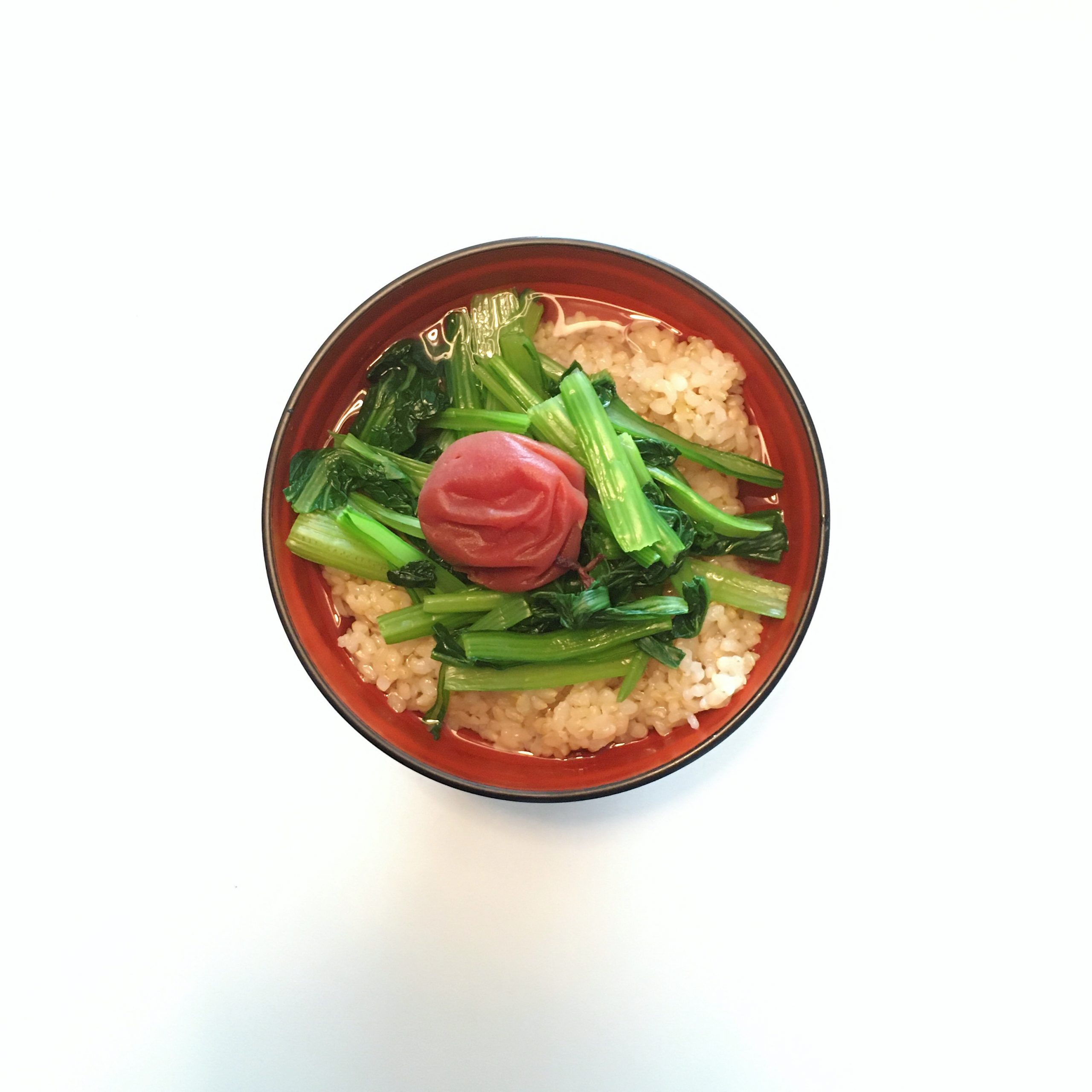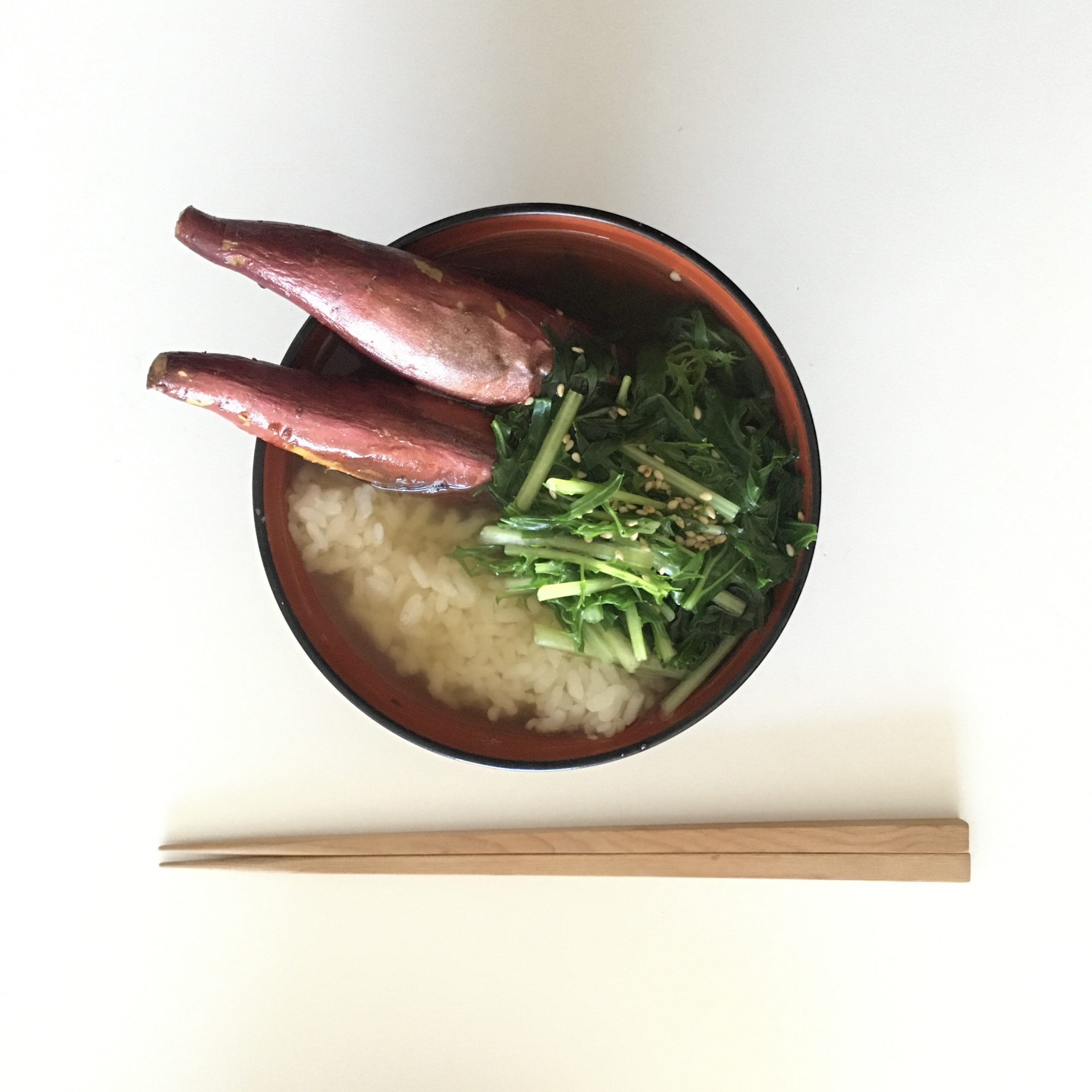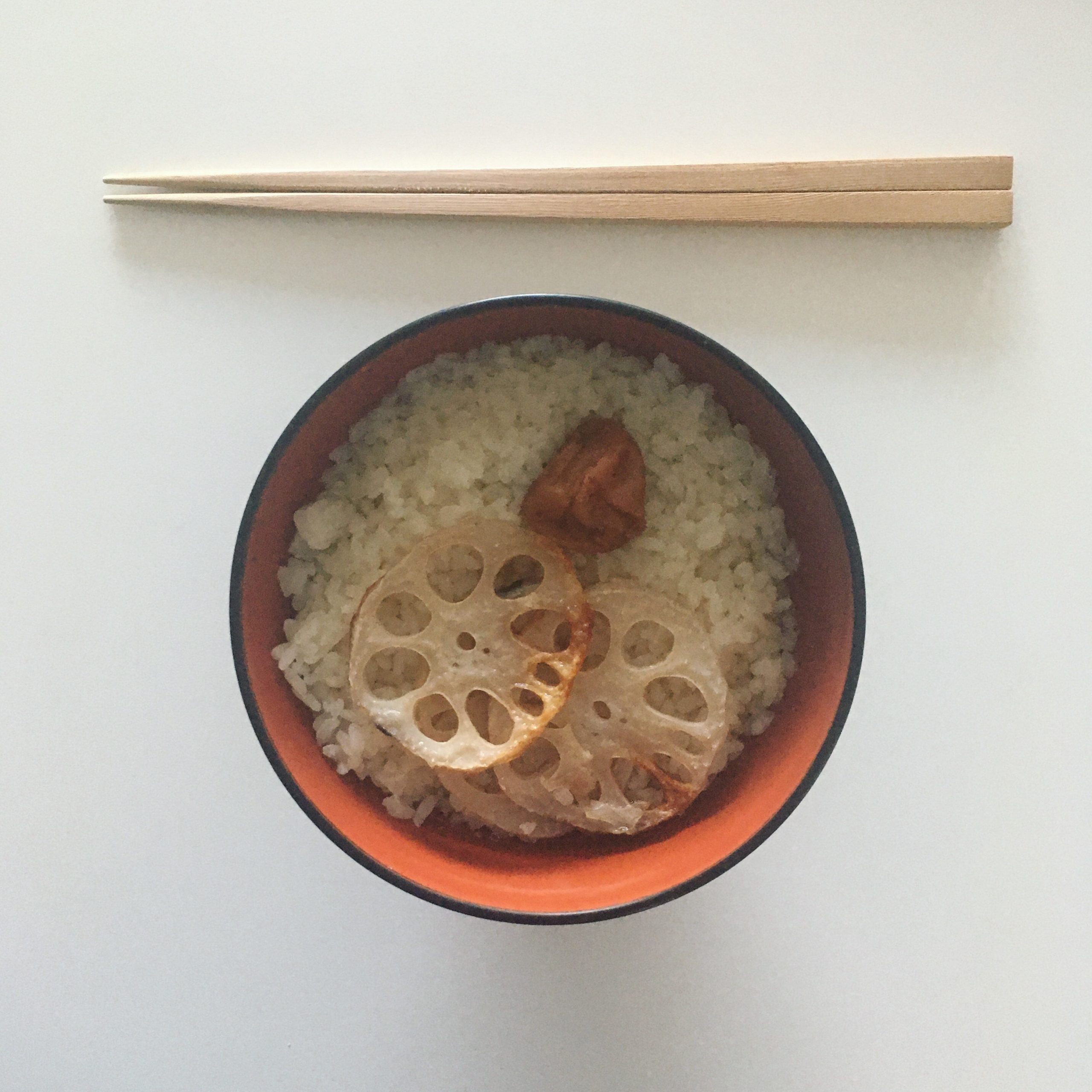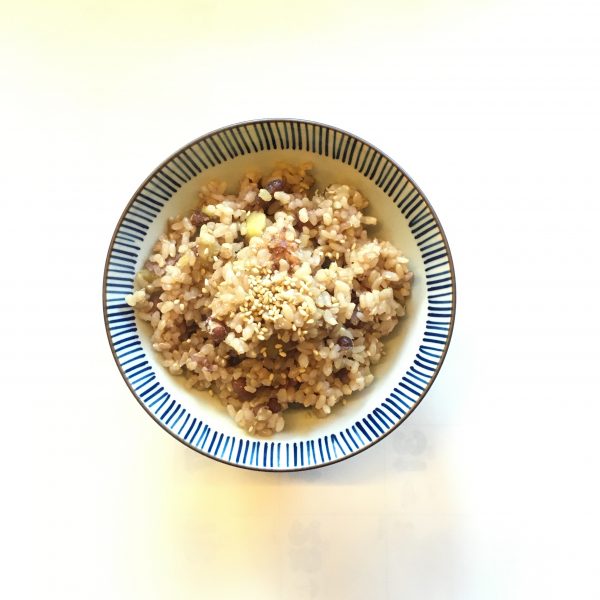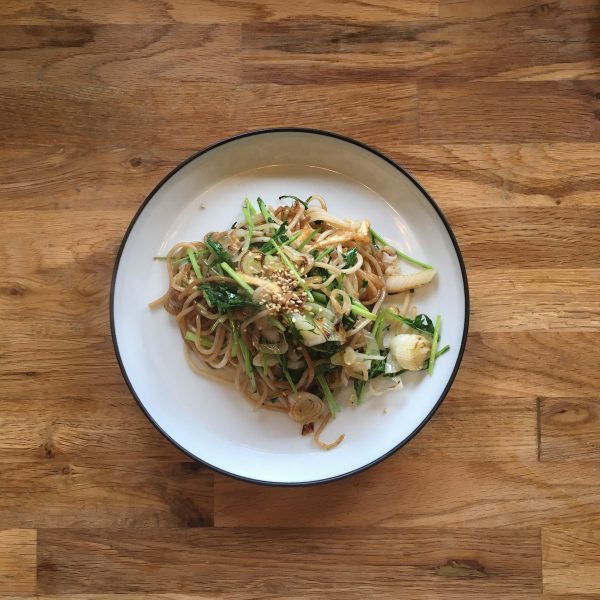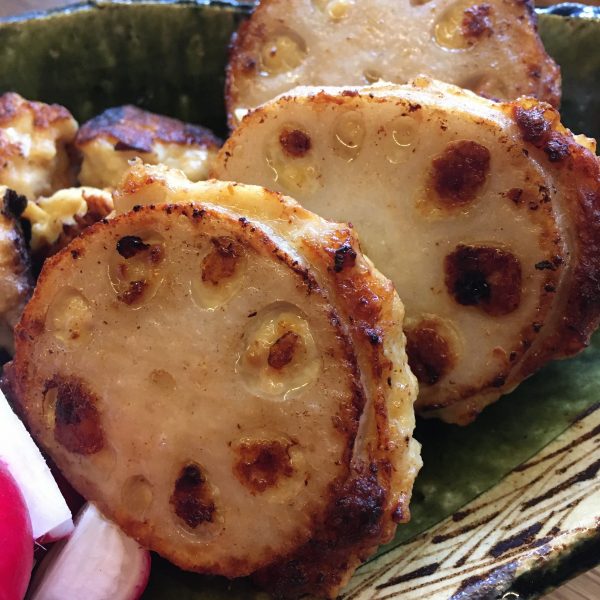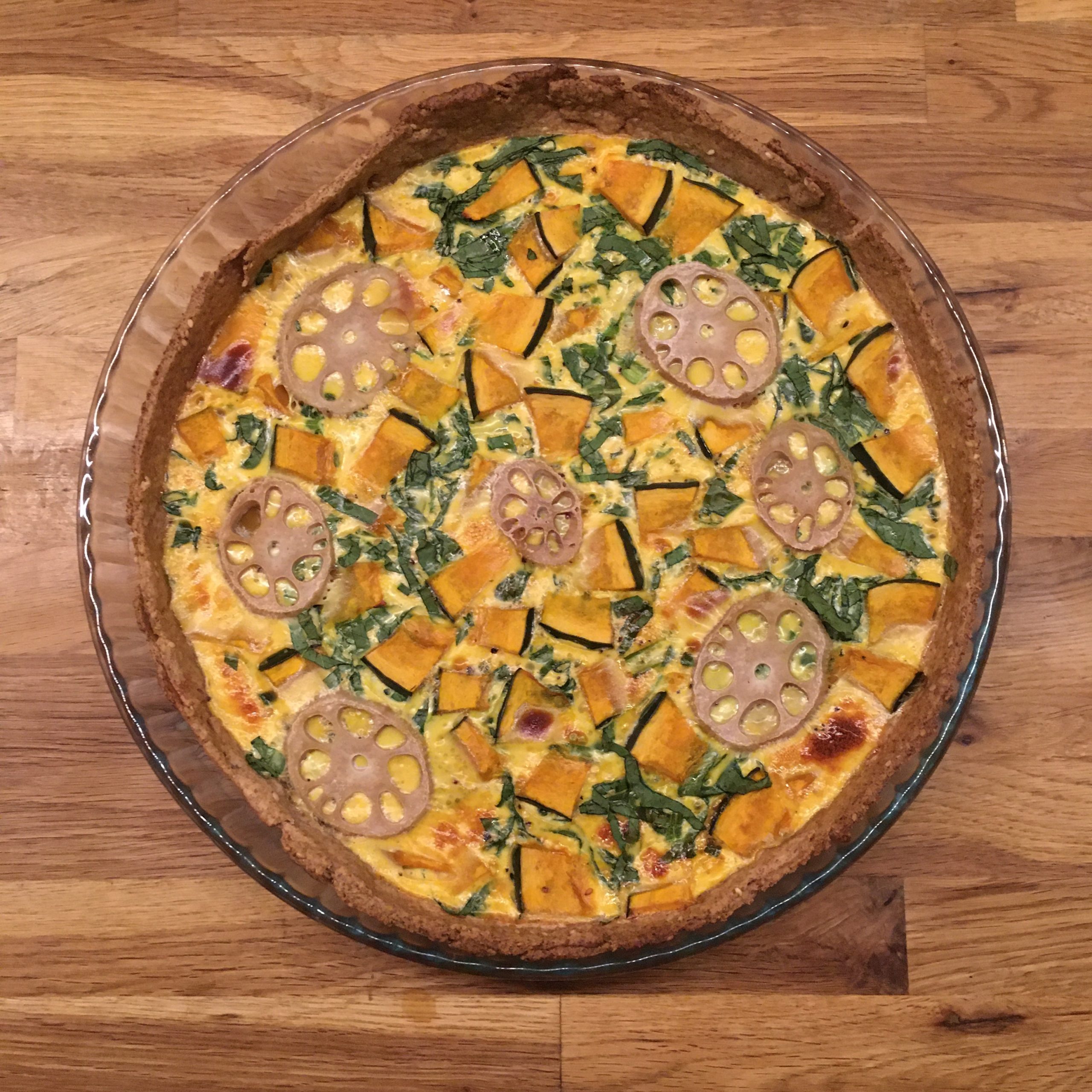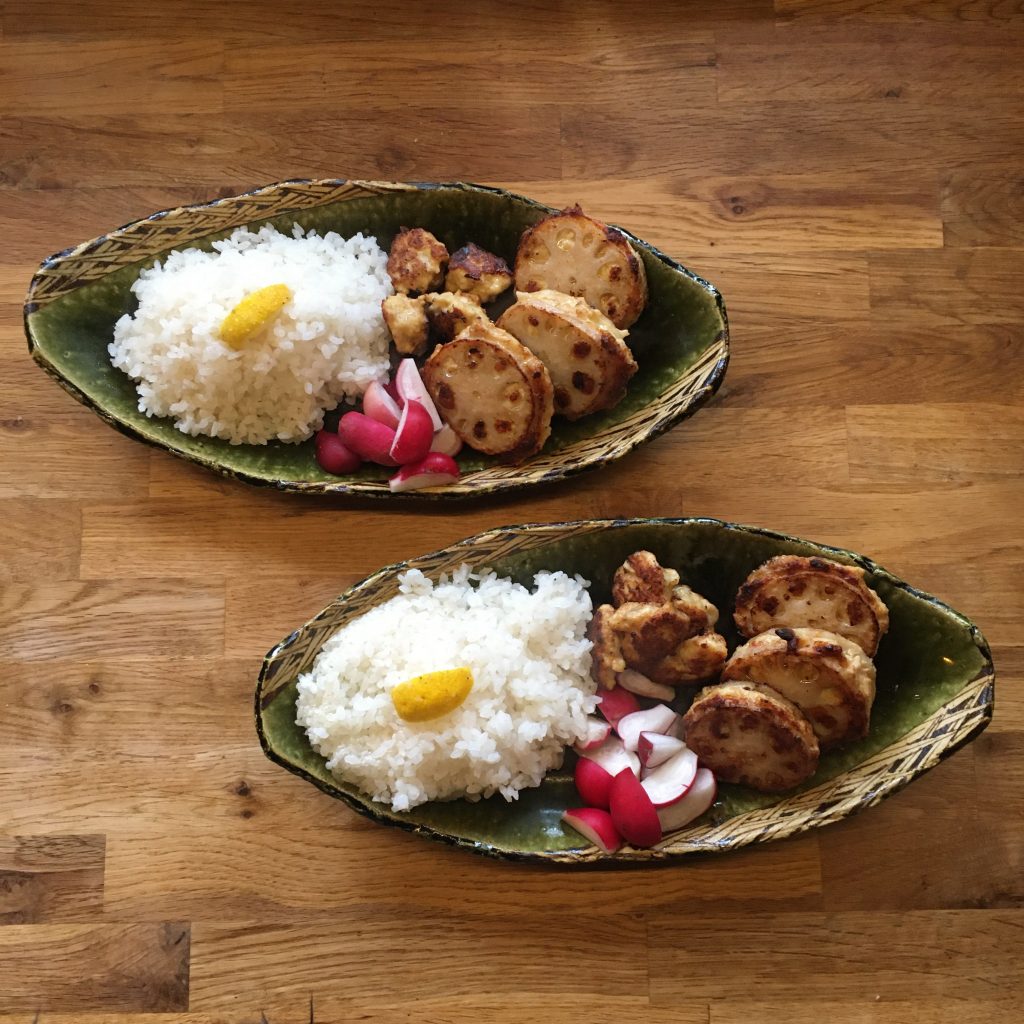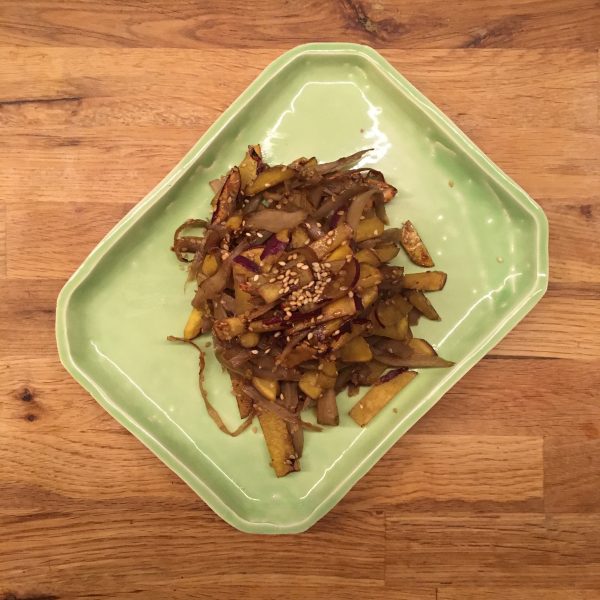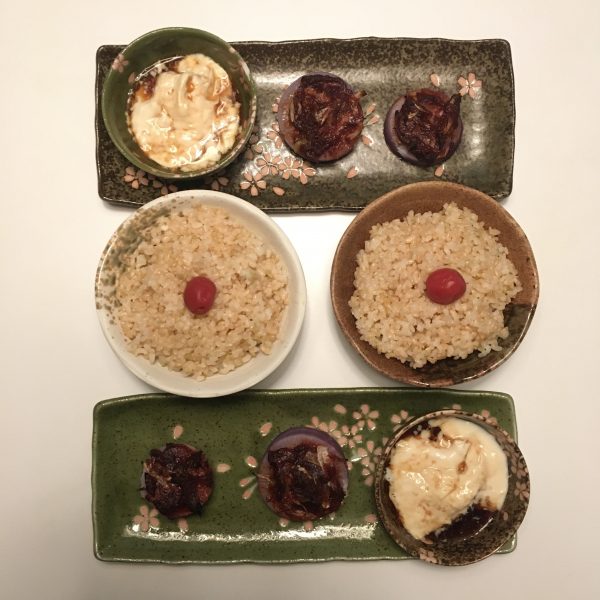I have a principle that I apply for pretty much anything and even more when I cook or think about cooking, it’s to be always flexible and opened to opportunities, or see change in plans as one. Nothing is definite. A recipe evolves and comes to life as ingredients are mixed together, taking the mood and the time into consideration… This is exactly how this wafu pasta recipe was created. It all started with a bicycle ride to go diy shopping. On the way back, if we take this road, I like to stop at the little stall that sells local fresh vegetables grown right on the spot. Sometimes the shelves are empty, and sometimes they have little treasures. They just had many little treasures this day. In particular a big bundle of tiny sweet leeks appealed me. I just picked it, slid a 100yen coin in the box and off we went.
But what to do with them… I had no plan… until a few days later when time for dinner came and it was decided we would eat pasta. Tagliatelle. A bit of sesame oil was remaining in the pan from some little rice crackers I made, so I decided to use it. Chopped the little sweet leeks, coated them in sesame oil, added a very ripe large tomato (that can easily be replaced by a good tomato sauce or preserved tomatoes), and cooked at low heat until I obtained a creamy tomato sauce with the delicious flavor of the fragrant sesame oil, slightly confit. Added the boiled pasta, stirred well and added a bit of sesame seeds before serving. A new version of the wafu pasta…
How do eat your pasta Japanese-style? Have you ever tried???
